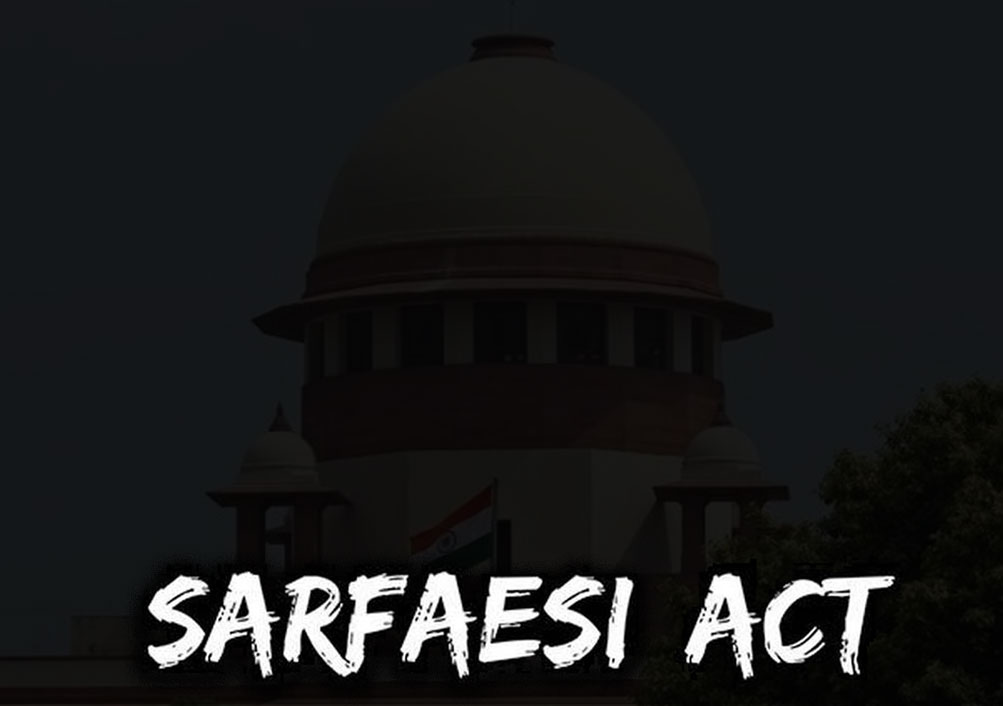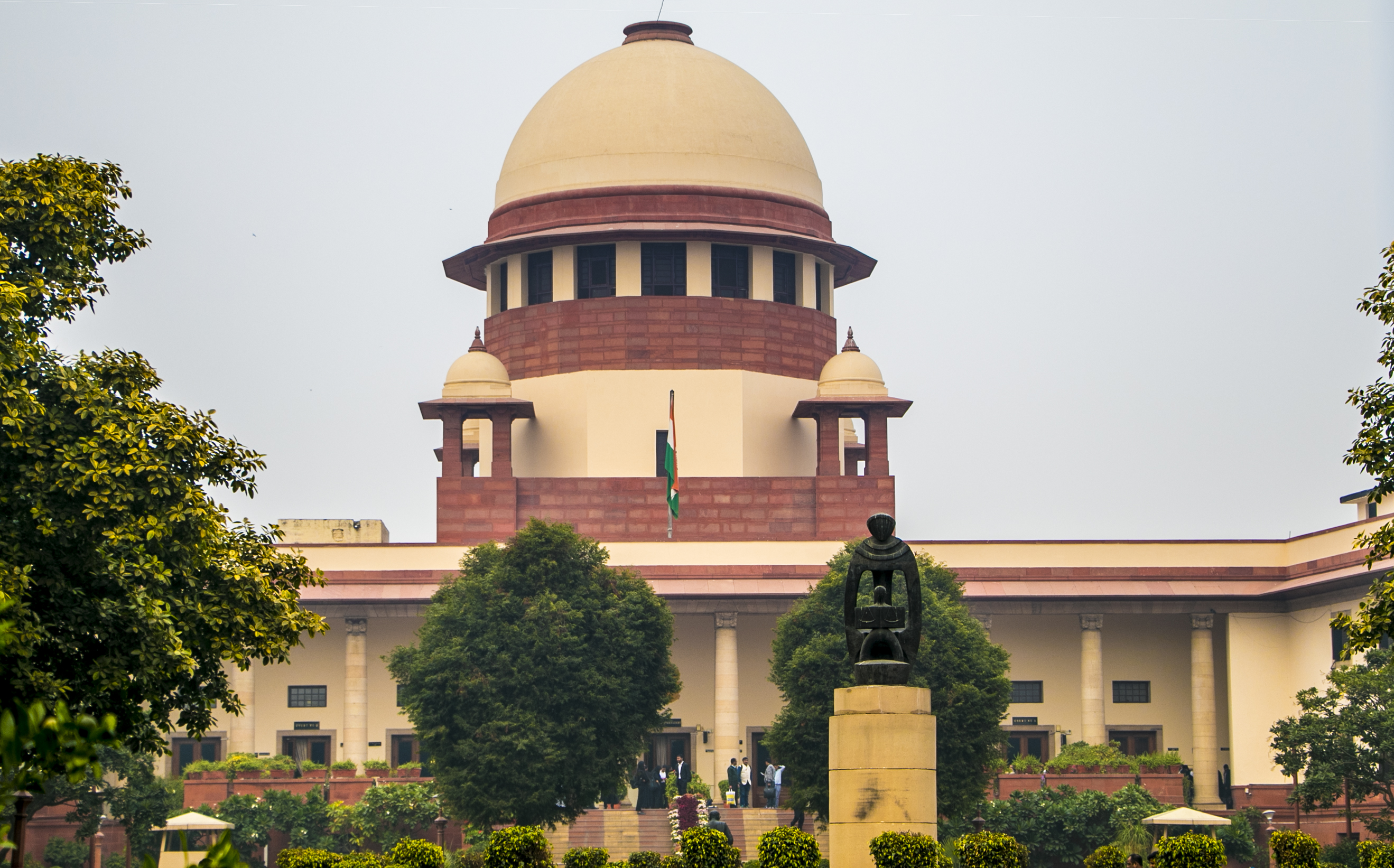In CIVIL APPEAL NO.175 OF 2022-SC- Powers u/s 14 of SARFAESI Act can be exercised by Additional Chief Metropolitan Magistrates and Additional District Magistrates: Supreme Court Justices M.R. Shah & B.V. Nagarathna [27-07-2022]

Read Order: M/s R.D. Jain and Co v. Capital First Ltd. & Ors
Mansimran Kaur
New Delhi, July 28, 2022: Clarifying that the Additional Chief Metropolitan Magistrate can be said to be at par with the Chief Metropolitan Magistrate in so far as the powers to be exercised under the Cr.PC are concerned, the Supreme Court has held that the orders to be passed under Section 14 of the Securitisation and Reconstruction of Financial Assets and Enforcement Security Interest Act , 2002 (SARFAESI Act) are ministerial steps to assist the secured creditor in getting/obtaining the possession of the secured property.
Dismissing the present appeal preferred by the appellant against the judgment of the Bombay High Court in a writ petition of 2017, the Division bench of Justice M.R. Shah and Justice B.V. Nagarathna referred to Section 14 and said “ We hold that the powers under Section 14 of the SARFAESI Act can be exercised by the concerned Additional Chief Metropolitan Magistrates of the area having jurisdiction and also by the Additional District Magistrates, who otherwise are exercising the powers at par with the concerned District Magistrates either by delegation and/or special order.”
Facts leading to the present appeal were that the first respondent- Financial Institution – Capital Limited was the secured creditor u/s 2(1)(zd) and it instituted proceedings under the SARFAESI Act for recovery of the amount due and payable by the appellant- borrower. The said proceedings initiated u/s 13(4) and the secured creditor proceeded to take possession of the secured asset. However, the borrowers refused to hand over the physical possession of theasset. The secured creditor took symbolic possession of the secured asset on January 21, 2017 and affixed the possession notice to the said secured asset.
On March 17, 2017, the secured creditor filed an application u/s 14 with the learned Chief Metropolitan Magistrate Court. As mandated by second proviso to section 14(1), the application was required to be disposed of within a period of 30 days and as the application was not decided within the period mandated by the statute, the secured creditor moved an application for advancement. The said application came to be dismissed by the Chief Metropolitan Magistrate, on the ground that the said application was a fresh application and many old applications were pending.
Therefore, the secured creditor approached the High Court by way of the present writ petition for an appropriate order directing the Chief Metropolitan Magistrate to dispose of their applications u/s 14 in a time bound manner. The High Court observed that that so far as the exercise of judicial powers are concerned, the Chief Metropolitan Magistrate and the Additional Chief Metropolitan Magistrate stand on the same footing and one cannot be said to be either inferior or subordinate to the other. Aggrieved by the same, the appellant preferred the present appeal.
After hearing the submissions of the parties at length, the Court deemed it apposite to consider Section 14 of the SARFAESI Act and the powers exercisable by the District Magistrate and the Chief Metropolitan Magistrate u/s 14. In view of the same, the Court opined that the Magistrate has to adjudicate the correctness of the information given in the application and nothing more. Therefore, Section 14 does not involve an adjudicatory process of qua points raised by the borrower against the secured creditor taking possession of secured assets.
Thus, in view of the scheme of the SARFAESI Act, more particularly, Section 14 and the nature of the powers to be exercised by the Chief Metropolitan Magistrate/District Magistrate, the High Court in the impugned judgment rightly observed that the power vested in the learned Chief Metropolitan Magistrate/District Magistrate is not by way of persona designata, held the Bench.
The next question that was posed for consideration was whether the Additional Chief Metropolitan Magistrate can be said to be subordinate to the Chief Metropolitan Magistrate and to deal with the same, the Court took into account relevant provisions of Cr.P.C, namely Sections 11, 12, 15, 16, 17, 19 and 35.
The Court opined that the Chief Metropolitan Magistrate and every Additional Chief Metropolitan Magistrate shall be subordinate to the Sessions Judg and every other Metropolitan Magistrate shall, subject to the general control of the Sessions Judge, be subordinate to the Chief Metropolitan Magistrate. Thus the judicial powers and the powers under the Cr.PC which may be exercised by the Chief Metropolitan Magistrate, can be exercised by the Additional Chief Metropolitan Magistrate also. Thus, the Additional Chief Metropolitan Magistrate can be said to be at par with the Chief Metropolitan Magistrate in so far as the powers to be exercised under the Cr.PC are concerned, the Top Court stated.
The Bench was in complete agreement with the view taken by the High Court that firstly, the District Magistrate, Chief Metropolitan Magistrate is not a persona designata for the purposes of Section 14 of the SARFAESI Act and secondly, the expression “District Magistrate” and the “Chief Metropolitan Magistrate” as appearing in Section 14 of the SARFAESI Act shall deem to mean and include Additional District Magistrate and Additional Chief Metropolitan Magistrate for the purposes of Section 14 of the SARFAESI Act.
Accordingly, the present appeal was dismissed.
Sign up for our weekly newsletter to stay up to date on our product, events featured blog, special offer and all of the exciting things that take place here at Legitquest.




Add a Comment